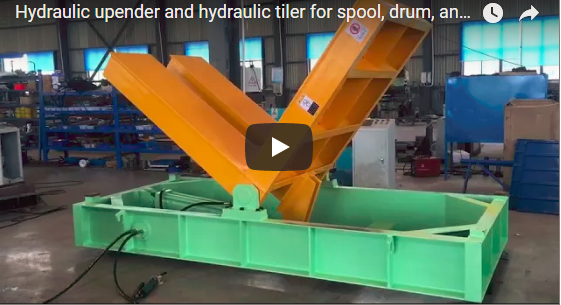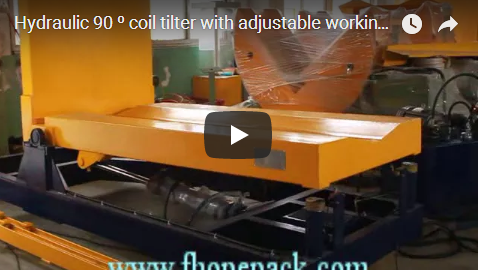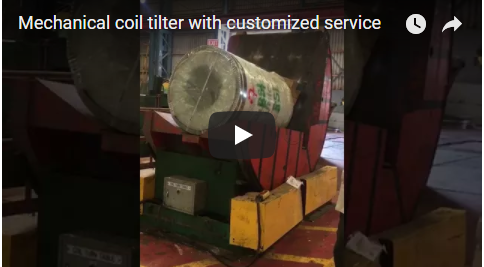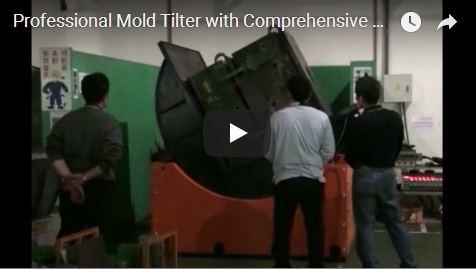Enhancing Warehouse Safety and Efficiency with the C-Shape Pallet Inverter
In modern distribution centers and warehouses, optimizing material handling processes is crucial for maintaining competitiveness and ensuring worker safety. The C-shape pallet inverter represents a significant advancement in automated load handling technology, specifically engineered for seamless 180-degree pallet rotation and efficient replacement of damaged or unsuitable pallets. This technical overview explores the design, specifications, operational benefits, and user experience of this essential piece of warehouse equipment.
1. Addressing Operational Bottlenecks: A Case Study
Consider a high-volume logistics hub, such as the one described in Delhi, India. Operational constraints like forklift restrictions, reliance on manual pallet jacks, and prohibitions on high-reach operations created significant bottlenecks. The manual process of transferring loads or replacing broken pallets was not only time-consuming, impacting throughput, but also exposed workers to ergonomic risks associated with manual handling. This scenario highlights a common challenge in the industry: the need for ground-level, efficient, and safe pallet exchange solutions.
The C-shape pallet inverter directly addresses these constraints by automating the rotation process at floor level.
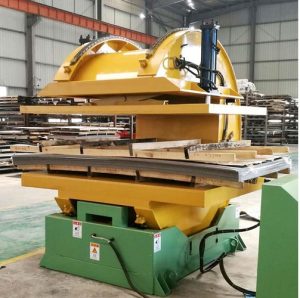
2. Technical Deep Dive: Design, Components, and Specifications
2.1 Design Philosophy and Structure
- C-Shape Frame: The defining feature allows pallet jacks or walkie stackers to place and retrieve pallets directly at ground level, eliminating the need for ramps or lifting the entire unit.
- Pit Foundation: Designed for installation within a shallow pit (typically 200–300 mm deep), allowing the loading platform to be flush with the warehouse floor. This creates a seamless transition for loading/unloading and enhances stability during rotation.
- Material Construction: Typically fabricated from heavy-duty structural steel with a durable powder-coat finish for longevity in demanding industrial environments.
2.2 Core Components and Mechanism
- Drive System: Employs a reliable electro-mechanical system, usually featuring a high-torque electric motor coupled with a robust gearbox (e.g., worm gear drive) for smooth and controlled 180-degree rotation.
- Clamping System: Incorporates adjustable pressure clamps (often mechanically or hydraulically actuated) to securely hold the load during inversion. Clamping pressure can often be adjusted based on load fragility.
- Rotation Mechanism: Precision-engineered rotational assembly ensures accurate and repeatable 180-degree turns.
2.3 Key Specifications
| Feature | Specification | Notes |
|---|---|---|
| Load Capacity | Up to 1.5 tons (3300 lbs) | Varies by model; higher capacities available. |
| Cycle Time | Approx. 60–90 seconds per 180° rotation | Translates to 20–30 pallets per hour throughput. |
| Pallet Compatibility | L1200 x W1200 x H1000–1600mm | Adaptable to various standard pallet sizes. |
| Rotation Angle | Full 180 degrees | Standard for pallet exchange operations. |
| Power Requirements | Typically 380V/50Hz/3Ph (configurable) | Check specific model for local requirements. |
| Control System | Push-button panel & Optional remote | PLC options available. |
| Foundation | Requires shallow pit installation | Ensures floor-level operation and stability. |
| Safety Features | Guarding, Emergency Stops, Interlocks | Compliant with safety standards. |
3. Operational Workflow and User Experience
Operating the C-shape pallet inverter is designed for simplicity and efficiency:
- Load Placement: A pallet truck places the loaded pallet onto the inverter's platform, flush with the floor.
- Clamping: The operator initiates the clamping sequence via the control panel or remote. The clamps gently secure the load.
- Inversion: The operator initiates the 180-degree rotation. The robust mechanical drive ensures a smooth, controlled turn.
- Pallet Exchange: Once inverted, the original pallet is now on top and easily removed

